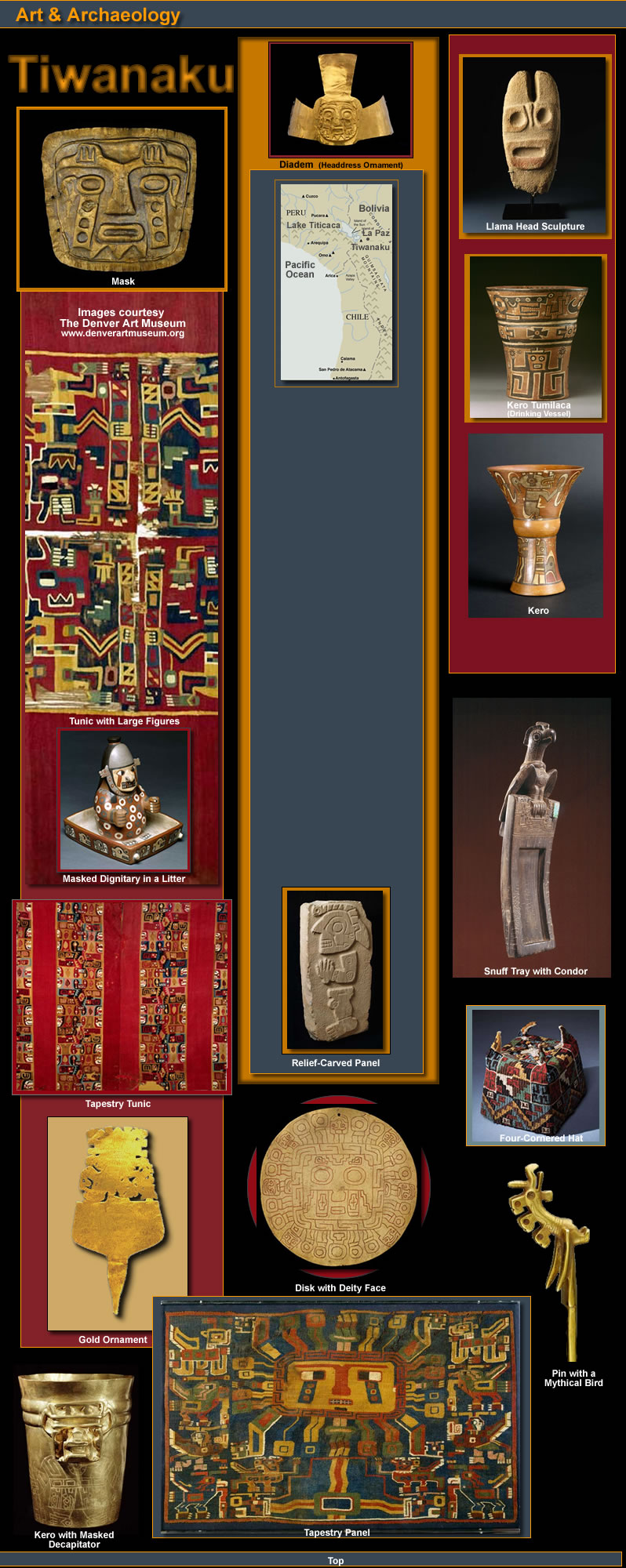

Reaching out from a time in the distant past, these Tiwanaku objects bring to light a dazzling culture that existed over a thousand years ago and predated the Incan Empire by about 400 years. The Tiwanaku culture is one of South America's most spectacular archaeological sites. The prehistoric city of Tiwanaku is nestled in the highlands of Bolivia at nearly 12,500 feet above sea level on the southern shore of the famous Lake Titicaca, along the border between Bolivia and Peru. Tiwanaku developed into a bustling city, constructed with many terraced platform pyramids, courts and urban centers, and an estimated population of 30,000 to 40,000 people lived in and around the city. Discovered by Spanish conquistadors in the early 16th century, the Tiwanaku civilization had existed for nearly 1000 years before mysteriously disappearing in A.D. 1100. It had reached its peak between A.D. 500 and 950. The Tiwanaju people built large temples with stone sculptures and ceremonial gateways. They practiced sacred rituals and human sacrifice. According to archaeological findings, the Tiwanaku people, who were an agricultural culture, appear to have worshipped a celestial deity, who had winged attendants. Human-like winged creatures are common on many ceramic vessels and they are believed to have been worshipped to assure plentiful agriculture, good herding and good fishing. Today, a small village of Aymara Indians lies in the area close to many of the prehistoric Tiwanaku ruins. The Tiwanaku heritage still
remains an integral part of the religious lives of Andean people in
present day Bolivia. The items in this exhibit were assembled by the Denver Art Museum from both public and private collections from Europe and from North and South America. Contributors include: the Peabody Museum of Archaeology and Ethnology, Cambridge, Massachusetts and the Cleveland Museum of Art.
|
 |
|